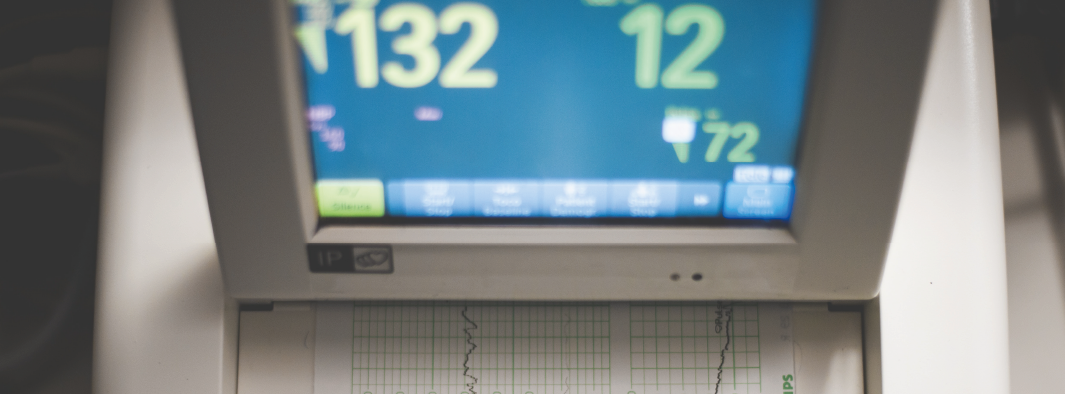-
TrendsHealthcareLatin America
-
SectorHealthcare and Pharmaceutical Industry
-
CountriesGlobal
INTRODUCTION
Rare diseases are a health issue that affect approximately 6-8% of the global population. According to data from the World Health Organization (WHO), it is estimated that 400 million in seven billion people worldwide suffer from at least one kind of rare disease. Despite the working definition provided the WHO definition, every country does its own statistical analyses, and consequently measures the affected percentage of its population differently.
The United States estimates that 1 in every 1,500 people has a disease considered rare. Japan claims that 1 in 2,500 people is affected by such a disease. Europe estimates that the proportion is somewhere in between these two figures and posits that 1 out of 2,000 individuals is suffering from a rare disease. Furthermore, it is estimated that there are some 30 million citizens in the European Union living with a rare disease. According to the WHO, a rare disease is one that affects no more than 65 people out of 100,000. However, certain other estimates propose that the actual number is higher due to population growth. In Brazil, one of the main epicenters of rare diseases, there are around 13 million people diagnosed with one of the 8,000 rare diseases documented today.
When examined on a global scale, the figures are arresting and worrying. Nonetheless, a research study by the association Amigos Múltiples por la Esclerosis (AME) [Multiple Friends for Sclerosis] entitled “Radar de los Raros, el actual escenario de las enfermedades raras en el Congreso Nacional” [“Rare Radar, the current situation of rare diseases in the National Congress”], posits that this scenario could be changed through actions by public authorities and organized society. Analysis of this study reveals a need to create local public policies to address rare diseases, a process in which the two Brazilian legislative bodies would play a major role.
“It is estimated that 400 million worldwide suffer from at least one kind of rare disease”


WHAT THE NUMBERS SAY
Systematic review of research from the databank kept by the National Congress, which spans the period between January 2000 and December 2021, shows that the legislative bodies recorded more than 6,400 proposals related to the healthcare sector in those 21 years. These motions include 199 with a direct reference to rare diseases: 167 in the Chamber of Deputies and 32 in the Federal Senate. Of those, only eight have been approved and 159 are still in their passage through Parliament. That number of healthcare related proposals that refer to rare diseases only makes up 3% of all the bills proposed in the sector.
Despite the low number of proposals, the growing interest in the issue among congress people is noteworthy. Between 2000 and 2005, deputies and senators only presented 11 bills in support of the needs of patients living with rare diseases, whereas 130 have been proposed since between 2016 and the present day. There was a peak after 2019, when the Parliamentary Front on Rare Diseases was set up in the Chamber of Deputies and the Sub-committee on Rare Diseases in the Federal Senate. This would indicate that the information produced by professional associations has helped to raise the level of knowledge among parliamentarians about the problems faced by patients living with rare diseases, and has gone on to strengthen legislative commitment to finding solutions for the most pressing issues and creating more effective political proposals. Of the 199 bills put forward, 105 refer to the creation of specific policies or programs in response to rare diseases; 81 deal with tax issues, judicialization and the rights of patients living with rare diseases; eight seek to amend legislation associated with the National Health Monitoring Agency (ANVISA); three assess technologies used in treatments; and two propose incentives or regulation for research into rare diseases;. These figures reflect a growing sense of need for these patients to be the subject of urgent attention.
HOW TO CHANGE THE CONTEXT OF RARE DISEASES IN BRAZIL
According to the association Amigos Múltiples de la Esclerosis (AME), legislative bodies have a responsibility to pay increased attention to the needs of patients living with rare diseases in order to change the current circumstances. Doing so would result in several changes, including:
– PROPER ACCESS TO HEALTHCARE
Many patients suffering from these serious and rare diseases do not have sufficient access to healthcare and medical treatment due to a lack of structured public policies.
– NEED FOR MORE ACTION FROM THE NATIONAL CONGRESS
The National Congress plays a fundamental role in formulating public healthcare policies and in instigating debate around the issues that involve rare diseases.
– COMPLEX SCENARIO
The specific context of rare diseases in Brazil is concerning. The country has troublingly few rare diseases that have been addressed with a genuinely effective clinical protocol on therapeutic guidelines (PCDT). Furthermore, although awareness movements have indeed gained ground in society regarding these diseases, a significant lack of information still remains among the population, especially with regard to the diseases that affect fewer than 200,000 people worldwide known as orphan diseases. With that in mind, there is a need for the public authorities and organized society to take action in order to make structured public policies on rare diseases viable, and consequently improving both access to healthcare and quality of life for those living with these diseases.
– MORE EXTENSIVE PUBLIC POLICIES
Legislative bodies have a responsibility to broaden the formulation of public healthcare policies and promote discussion of the issues that involve rare diseases.
– SOCIAL COMMITMENT
Cystic fibrosis can be considered a positive benchmark of social commitment, and a template for formulating public policies capable of responding to the needs of the almost 13 million Brazilians affected by a rare disease.
HISTORIC DECISION
In December 2021, the United Nations General Assembly formally adopted a historic resolution entitled “Addressing the challenges of persons living with a rare disease and their families”. In the resolution, the 193 UN Member States call on the countries of the world to strengthen their health systems (especially with regard primary healthcare) in order to offer universal access to a wide range of services that are safe, high quality, accessible, available and integrated from clinical and financial points of view.
By adopting this resolution, the UN is strengthening and highlighting the rationale for inclusion and decision-making purposes in countries around the world, including Brazil. Locally, the Brazilian Federal Government launched its Guide to the Single Healthcare System (SUS) for people living with rare diseases in March 2022. According to the Ministry of Health, the document provides not only information about the symptoms and warning signs that might indicate the presence of a rare disease, but also information on multi-disciplinary treatments and advice on living a healthier life. The guide details relevant information from healthcare services, education and multi-disciplinary care, and it will be used to accompany the patient throughout the course of their life.
Furthermore, according to Agência Brasil, the Federal Government has created a Care Line for persons living with a rare disease. This important tool supplements primary and specialized healthcare networks by seeking to organize the flow of care as well as to integrate and articulate all care service delivery points The initiative defines the services that should be provided at each care service delivery point, including the promotion, prevention, treatment, rehabilitation and ongoing care based on the needs in each case.
Under this initiative, it will be possible to follow the admittance of persons living with rare diseases into the healthcare system, analyze warning signs for diagnosis, provide guidelines on treatment, respond to the main needs of the individual, support quality of life and offer ongoing care. Care is both multi-disciplinary and inter-disciplinary, and integrates all levels of the healthcare services, with Primary Healthcare acting as the front door into the SUS. The acting Health Minister , Marcelo Queiroga, stated that his department has invested some R$ 3.8 billion since 2019 in resources to care for patients living with rare diseases in the Single Healthcare System.
“The ministry has invested some R$ 3.8 billion since 2019 in resources to care for patients living with rare diseases in the Single Healthcare System”
More significant progress is on the horizon. In 2021, law No. 14,154 raised the number of diseases identified by the Heel Prick Test offered by the SUS from 6 to 50 in. The publication of Ministerial Order No. 199 in January 2014 was equally important. This document “establishes the National Policy on Comprehensive Care to Persons Living with Rare Diseases, approves the Guidelines on Comprehensive Care to Persons Living with Rare Diseases within the Single Healthcare System and establishes financial incentives to pay for it.”
Although that Brazil had no official and specific policy on rare diseases until 2014, this does not mean that patients were not receiving care and treatment. As reported by Brasil Escola, the SUS did provide care to these people in one way or another, and medicines did eventually reach those that needed them, mainly through judicial channels. However, the results of these efforts have been fragmented, unplanned, wasteful of terms of public resources and potentially harmful to patients. Even in the face of such difficulties, patients have collaborated with leading organizations and associations to seek urgent help with rare diseases.
But what do Law No. 14,154 and Ministerial Order No. 199 have in common? According to Gustavo San Martin, CEO of AME, neither provides patients with the necessary ongoing care that they need given that diagnosis is not sufficient, they need treatment. Furthermore, Ministerial Order No. 199 lacks guarantees to ensure the care provided is comprehensive in practice.
Even so, the measures taken to standardize the heel prick test, provide access to genetic testing, ensure early diagnosis and treatment and promote a multi-disciplinary approach are measures that might reduce the impact that rare diseases have on the day-to-day of a patient and improve their quality of life.
It is believed that such legislative actions help raise the profile of people living with rare diseases and amplify their voice, accordingly enabling greater promotion of public health policies throughout Brazil.
From an industry perspective, rare diseases still considered relatively overlooked in Brazil. Edson Paixão, Managing Director of Ultragenyx, believes that few patients living with rare diseases actually receive multi-disciplinary treatment or are able to be diagnosed. The average lag time between symptom onset and diagnosis has been reduced from ten to six years, and although this is a significant improvement, it is still not ideal for preventing potential deterioration and serious impacts on the lives and health of the affected populations.
Within the sphere of classification and derivation, pediatricians are trained neither to interpret the diagnosis of rare diseases, nor to provide guidance to the patients and families affected by them. This is a common issue and contributes to a sense that patients and their families have of being lost in the system, a system with considerable flaws throughout the network. According to Edson Paixão, this conspicuous problem leads patients to look for support associations and networks outside of the SUS.

MY DISEASE IS DIFFERENT TO YOURS
Rare diseases are characterized as typically chronic health conditions that occur at low rates of prevalence among the population. The majority of rare diseases, approximately 80%, are genetic; however there are also other conditions that are caused by bacterial infection, viruses or allergies.
Although the diseases are by definition rare, the number of patients living with these conditions is high and increasing. As a result, encountering a rare disease is not actually uncommon. Besides the fact that it is not terribly uncommon to suffer from a disease in this category, the condition typically affects the families of these patients in several ways, both direct and indirect. As a result, it is actually uncommon for any given person to not be affected by a rare disease in some way
The life expectancy of someone affected by a rare disease often is shorter than that of a healthy individual. However, there is considerable variation in life expectancy between different types of rare disease; the life expectancy of a patient diagnosed with multiple sclerosis, for example, is different than that of someone with achondroplasia. Certain rare diseases prove fatal at birth, others in childhood, and still others later in adulthood. this variation, and the idea that ‘my rare disease is different to yours’, can lead to greater incidence of diagnosis and access to personalized treatment.
No matter how rare the patient may be, it is extremely important – both nationally and internationally – to raise awareness about these highly specific and hard-to-diagnose diseases.
These diseases are present across the country, from north to south. According to a count requested by LLYC and conducted by IQVIA, the number of diagnosed patients per region are as follows:
- Centre: 12,882 patients living with a rare disease
- North-east: 33,734 patients living with a rare disease
- North: 6,192 patients living with a rare disease
- South-east: 78,124 patients living with a rare disease
- South: 25,887 patients living with a rare disease
The number of confirmed diagnoses in the south-east region is considerably higher when compared with the other regions of Brazil. The differences in access to diagnosis and multi-disciplinary treatment reflect a possible error in the number of patients living with a rare disease counted in the region. Differing levels of awareness and knowledge among professionals and the population are also factors.
The structural efforts to organize the care line for rare diseases and the creation of Benchmark Centers for rare diseases have started the country on a trajectory towards future standardization of treatment. At present, the Ministry of Health has 17 active and specialized centers for the treatment of rare diseases distributed among the federative units of Brazil. Three are located in the Centre, five in the North-east, six in the South-east and three in the South.This number is not sufficient to respond to potential demand from patients. Meanwhile, rare diseases represent a great responsibility for the SUS as they incur much higher costs than average. A conflict therefore exists between universal access to healthcare and the budgetary capacity of public authorities. According to information from the Ministry of Health, spending on legal actions has risen from R$ 139.6 million in 2010 to R$ 1.2 billion in 2015, mostly relating to lawsuits on rare diseases.

NOT SO RARE
According to the research study entitled “Enfermedades Raras en Brasil – diagnóstico, causas y tratamiento desde la perspectiva de la población” [“Rare Diseases in Brazil – diagnosis, causes and treatment from a population perspective”] and conducted by IBOPE Inteligencia, only three in ten Brazilians do not know what rare diseases are. Raising awareness and campaigns on the subject have been largely effective in educating more of the public on rare diseases.
The rare is no longer rare, especially when we refer to the famous theory of the six degrees of separation, according to which “all people in the world, no matter how different, are six or fewer social connections away from each other”. This would suggest that people are related by a small number of connections. By this metric, rare diseases are not that rare.
“Only three in ten Brazilians do not know what rare diseases are”
Degenerative, chronic, progressive and incapacitating: a large number of rare diseases still have no cure and can even kill the patient. Knowledge is essential for transforming this situation. Through diagnosis and early multi-disciplinary treatment capable of alleviating symptoms and improving quality of life for the patient, it is possible to prevent or delay the deterioration of bodily functions. In order for that to happen, there is another big problem – besides public policies – that must be tackled: disinformation. That is why sharing knowledge eventually leads to the easing of patient suffering.
People living with a disease are not always visible. Gustavo San Martin, from AME, believes that the power of social media has created the perfect scenario for information to be converted into social mobilization and digital activism. This has led to the first major campaigns combating the invisibility of disease and people living with disease in society. Patients, families and advocacy associations have started to talk about the realities of day-to-day life for someone living with a rare disease on social media, as well as their clinical challenges.
Rare diseases are still rare pathologies, but they are becoming increasingly less unknown in society at large. It is not so rare to hear about people living with these rare diseases; many of which will no longer be classified as ‘rare’ when diagnostic rates rise above 65 in 100,000 inhabitants have a diagnosis and will have a less of an impact on patients’ health when public policies alleviate the challenges of day-to-day life with the disease.
Meanwhile, communication is the main mode of transformation in that scenario, opening a favorable path to making treatments viable and fostering effective public policies through awareness, relationships and the exchange of information with decision-makers. In the challenge to foster real awareness about rare diseases and to meet the needs of patients in different countries, health and political advocacy communication initiatives are the forces that steer and guide every front line battling for this cause.
A series of actions and procedures must therefore be developed. In practice, communication plays a fundamental role in getting strategic stakeholders involved by creating an atmosphere conducive to enabling mobilization for a health-related cause. Similarly, communication has the power to change rare diseases.
Authors
Giuliana Gregori
Georgina Rosell



